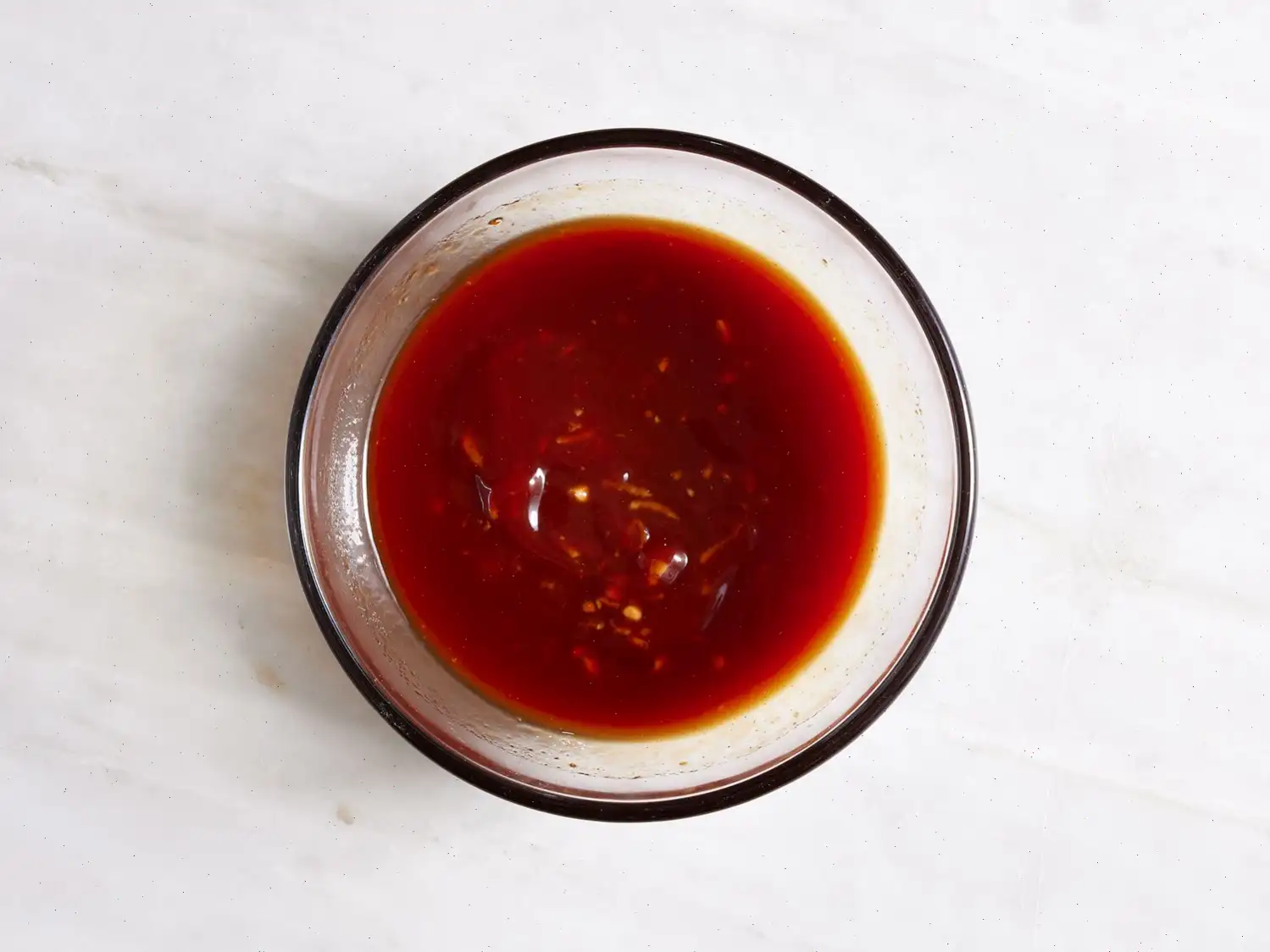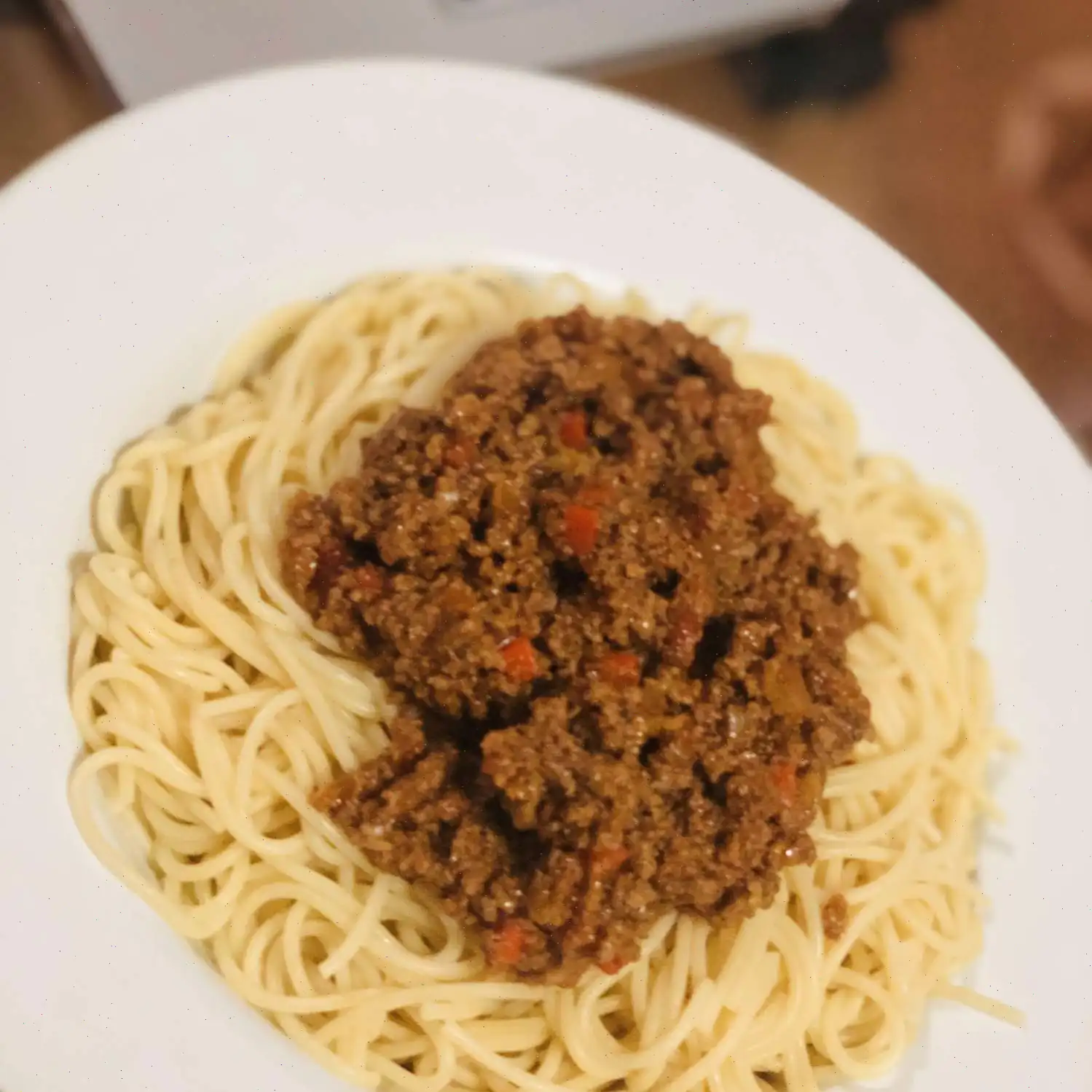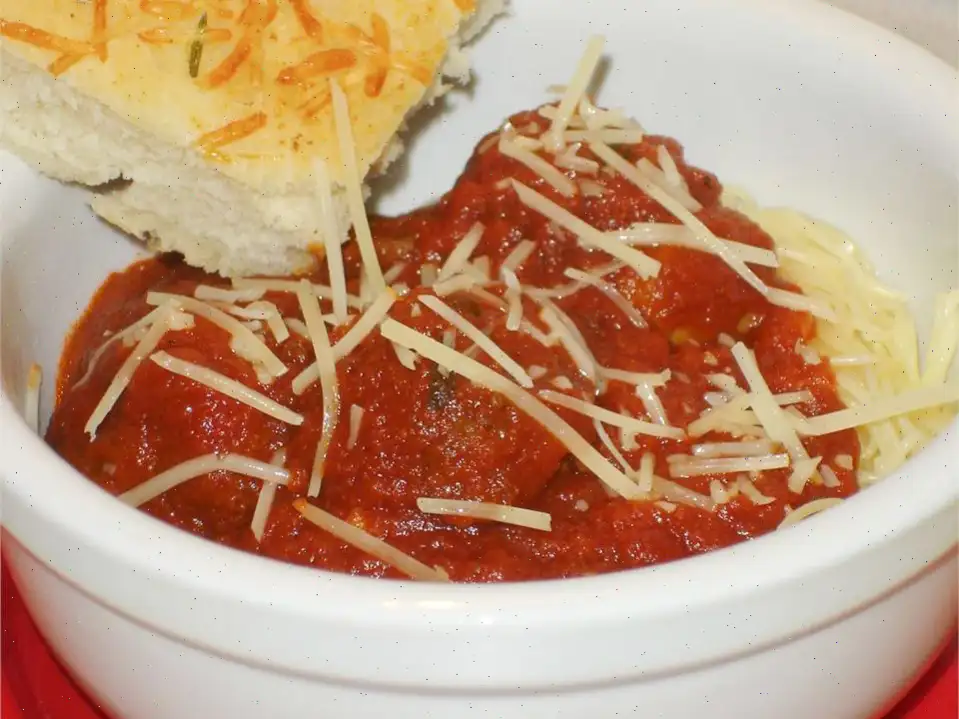
Moroccan Ras el Hanout-Spiced Tomato Sauce Recipe
Ingredients
- 1 tablespoon butter
- 2 ounces salt pork, diced or 2 slices thick-cut bacon
- 1 cup chopped red bell pepper
- 1/2 cup diced onion
- 1/2 cup diced peeled carrots
- 1/2 cup diced celery
- 4 medium cloves garlic, minced
- 2 tablespoons flour
- 1 (28-ounce) can crushed tomatoes
- 2 cups low-sodium chicken broth
- 1/4 cup golden raisins
- 1 tablespoon ras el hanout
- 2 sprigs fresh thyme
- 1 bay leaf
- 1/2 teaspoon salt
- 1/2 teaspoon freshly ground black pepper
Directions
Step 1: Melt the butter in a large, heavy-bottomed saucepan over medium-low heat.
Step 2: Add the salt pork to the pan and cook, covered, stirring occasionally, until the fat is rendered, about 10 minutes.
Step 3: Add the chopped bell pepper, onion, carrots, and celery. Cook, stirring occasionally, until the onions become translucent, about 10 minutes.
Step 4: Stir in the minced garlic and cook, stirring frequently, until aromatic, about 1 minute.
Step 5: Whisk in the flour and continue cooking, whisking constantly, until the mixture turns pale golden in color and releases a lightly nutty aroma, about 3 to 4 minutes.
Step 6: Add the crushed tomatoes, chicken broth, raisins, ras el hanout, thyme, and bay leaf to the saucepan. Stir to combine.
Step 7: Bring the mixture to a boil over medium-high heat, then reduce the heat to medium-low. Cover the pan and let it simmer for 45 minutes.
Step 8: Remove the pan from the heat. Discard the thyme sprigs and the bay leaf.
Step 9: Let the sauce cool, uncovered, for about 20 minutes.
Step 10: Working in batches, carefully transfer the mixture to a blender and blend until smooth. If you prefer, you can use an immersion blender, though the texture may not be as smooth.
Step 11: Stir in the salt and freshly ground black pepper to taste, then serve the sauce warm.
Editors Note
Salt pork is similar to bacon as it is made from pork belly and cured in a salt brine. However, unlike bacon, it is not smoked. If you use bacon instead, your sauce will have a slightly smoky flavor, adding a nontraditional twist to the dish.
Nutrition Facts (per serving)
- Calories: 108
- Fat: 6g
- Carbohydrates: 13g
- Protein: 3g
- Sodium: 471mg
- Dietary Fiber: 2g
- Total Sugars: 7g
- Vitamin C: 29mg
- Calcium: 41mg
- Iron: 1mg
- Potassium: 357mg
Servings Per Recipe: 11
The History of Ras el Hanout-Spiced Tomato Sauce
The Moroccan Ras el Hanout-spiced tomato sauce has its roots deeply embedded in North African culinary traditions. "Ras el hanout," which translates to "head of the shop," is a spice blend that represents the pinnacle of Moroccan spice mastery, typically comprising a mix of over a dozen spices including cinnamon, cardamom, cumin, turmeric, and sometimes even dried flowers. The tomato sauce, enriched with this complex spice blend, reflects Moroccos historical position as a crossroads of trade and culture, where Mediterranean, Arab, Berber, and African influences merged. The inclusion of ingredients like raisins, onions, and garlic highlights the Moroccan penchant for balancing sweet and savory flavors.
Regional Characteristics
This sauce is particularly associated with Moroccan home cooking and the Maghreb region, but variations can be found across North Africa. In the northern regions, cooks often incorporate olives or preserved lemons, whereas southern recipes may emphasize the sweetness of dried fruits. The preparation techniquesslow cooking over low heat and careful blendingare traditional methods designed to create a velvety texture and deepen the aromatic complexity. The use of ras el hanout gives the sauce its distinctive warm, slightly smoky, and subtly floral flavor, distinguishing it from simpler tomato sauces found elsewhere.
Differences from Similar Dishes
While it may resemble other tomato-based sauces like Italian marinara or French sauce tomate, the Moroccan Ras el Hanout-spiced tomato sauce is uniquely defined by its spice profile and sweet-savory balance. Unlike Italian sauces, it typically contains dried fruits such as raisins or apricots and a more intricate layering of spices. Compared to French tomato sauces, it leans less on butter and cream for richness and more on the aromatic qualities of the spices themselves. This combination creates a complex flavor that can transform basic ingredients like meatballs, roasted vegetables, or couscous into a distinctive Moroccan-inspired dish.
Typical Serving Occasions
In Morocco, this sauce is commonly served over meat, poultry, or vegetable dishes and accompanies couscous, rice, or bread. It is often featured during family gatherings, festive occasions, and Ramadan meals. Restaurants specializing in Moroccan or North African cuisine frequently use it as a base for tagines, braised dishes, and even as a dip for fresh bread. Its versatility allows it to function as both a main sauce and a condiment, adding depth and warmth to everyday meals as well as special feasts.
Interesting Facts
- Ras el hanout blends can vary significantly from shop to shop, meaning no two sauces are exactly alike.
- The combination of sweet and savory elements in this sauce is a hallmark of Moroccan cuisine, designed to excite multiple taste sensations in one bite.
- This sauce is often made in large batches and can be stored for several days, which historically suited Moroccan households preparing food for extended family gatherings.
- Its deep, aromatic flavor makes it popular not only in Morocco but also in modern fusion cuisine around the world.
- The sauce showcases the Moroccan culinary philosophy of layering flavors gradually, rather than relying on a single dominant ingredient.
You can listen to this recipe in AI audio format. Simply click the play button below to listen to the content in a format that suits you best. It’s a great way to absorb information on the go!








